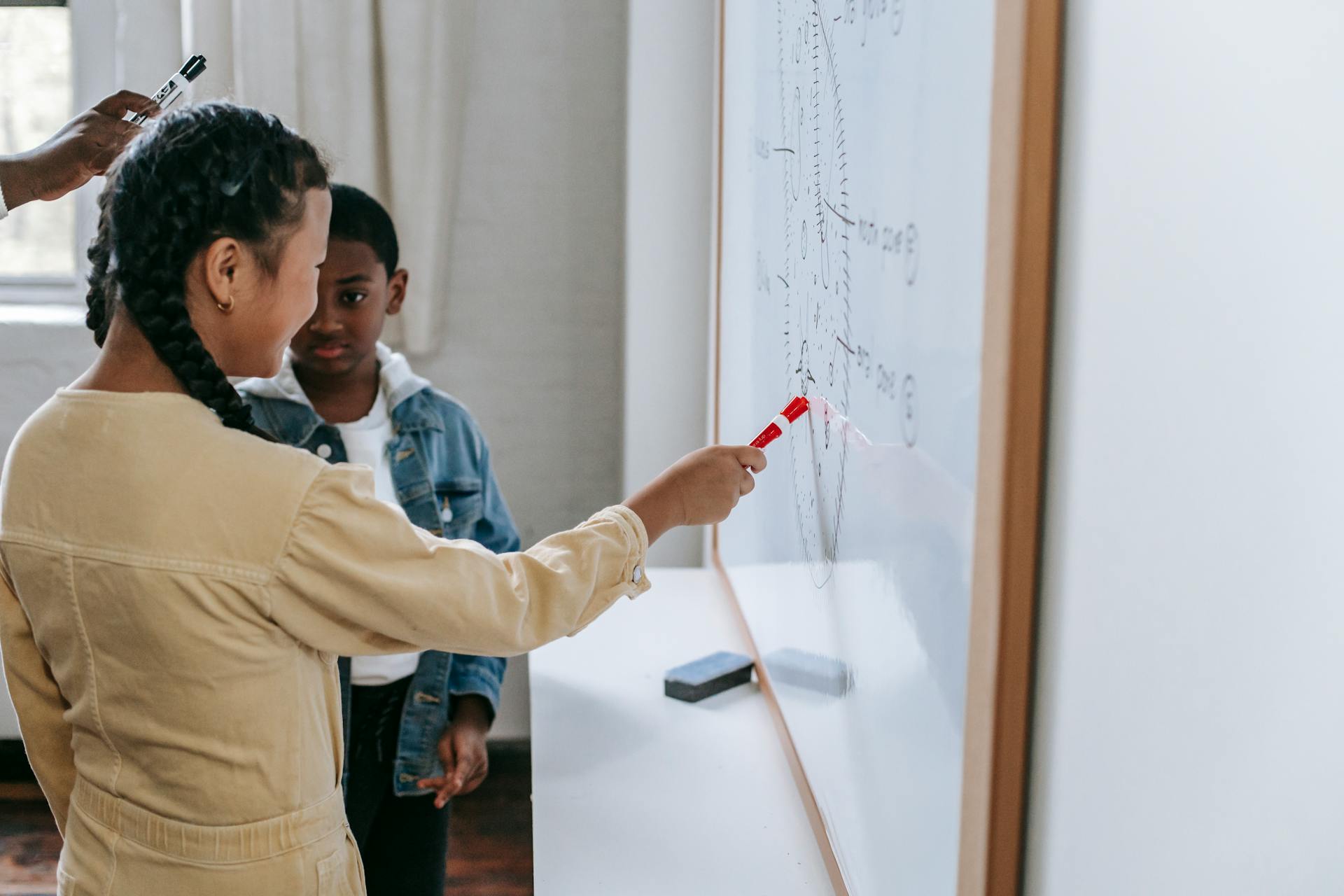
Preference learning is a fascinating field that helps machines understand what we like and dislike. It's a crucial aspect of artificial intelligence, enabling systems to make personalized recommendations and decisions based on our preferences.
Preference learning involves learning from user feedback, which can be explicit, such as ratings or clicks, or implicit, like browsing history. This feedback is used to create a model that predicts our preferences.
The goal of preference learning is to find a balance between accuracy and diversity. In other words, the system should recommend items that we are likely to like, while also exposing us to new and diverse options.
By learning from our preferences, machines can become more efficient and effective in their recommendations, ultimately improving our user experience.
Definition and Techniques
Preference learning is the task of learning to predict an order relation on a collection of objects, such as ranking alternatives.
There are two fundamentally different ways to approach this task: modeling the binary preference relation directly or inducing it indirectly via an underlying utility function.
Preference learning algorithms can be applied to both object ranking problems and label ranking problems, depending on the formal modeling of the preference context.
Two practical representations of preference information are assigning real numbers or binary values to pairs of alternatives, leading to different techniques being applied in the learning process.
Definition
Preference learning is the task of learning to predict an order relation on a collection of objects, also known as alternatives.
The goal of preference learning is to learn from examples where the sought order relation is partially known. This allows algorithms to identify patterns and make predictions about the order of objects.
In preference learning, there are two types of problems: object ranking and label ranking. Both types can be approached in two different ways.
Object ranking problems involve ranking a collection of objects, while label ranking problems involve ranking a collection of labels.
Techniques
There are two practical representations of preference information. One is assigning real numbers to options, with the higher number indicating a stronger preference.

You can think of this like rating your favorite foods, where a higher number means you prefer that food more. For example, if you rate pizza as an 8 and sushi as a 6, you have a stronger preference for pizza.
Another representation is assigning a binary value to each pair of options, indicating whether one option is preferred over the other.
Here are the two techniques applied to the learning process:
- Information retrieval techniques
- Machine learning
These techniques are used in conjunction with the two representations of preference information to learn and make decisions.
Agent Similarity
Agent Similarity is a crucial aspect of understanding human behavior and decision-making.
The main effect of agent preference similarity has been studied in various contexts, including observing the choice of one agent compared to another.
Research has shown that observing the choice of an agent who is different from oneself (ADiff) compared to an agent who is similar to oneself (ASim) leads to greater activation in specific brain regions, including the right inferior frontal sulcus (rIFS) and the right fusiform gyrus (rFG).
Intriguing read: Similarity Learning
In the right inferior frontal sulcus, a region involved in language processing, the activation was significantly higher when observing ADiff compared to ASim. The peak voxel coordinates for this region were 38, 10, and 34 in MNI space, with a z-score of 3.86 and a cluster size of 57.
The right fusiform gyrus, a region involved in visual processing, also showed significant activation when observing ADiff compared to ASim, with peak voxel coordinates of 14, -82, and -10 in MNI space, a z-score of 3.51, and a cluster size of 72.
These findings suggest that our brains are more active when we observe the choices of others who are different from us, particularly in regions involved in language and visual processing.
In addition to observing the choices of others, our brains also track the consistency of agents' choices across both agents.
A parametric analysis of the consistency GLM revealed that a cluster-corrected region centred on the superior medial frontal gyrus (smFG) showed significant activation when tracking the consistency of agents' choices. This region was more active when the agents' choices were consistent and less active when they were inconsistent.
Here is a summary of the regions involved in agent similarity:
These findings highlight the importance of understanding agent similarity in various contexts, including decision-making and social behavior.
Similarity-Related Responses in Visual Attention
The brain's response to similarity in choices is a fascinating topic. The IFS, a region involved in attentional processing, shows greater activation when participants see the choices of an agent that is dissimilar to their own.
The IFS has been implicated in attentional processing, particularly in the control of attentional shifts by both internal goals and by salient external stimuli. This is why participants may find the choices of ADiff to be more attention-grabbing.
The FG, known to play a key role in the visual perception of faces, also shows increased activation when participants observe faces of individuals judged to have different traits to themselves. This is consistent with a previous study that found greater FG activation in similar situations.
Interestingly, a conjunction analysis revealed that when an agent made an unexpectedly dissimilar choice, it led to increased activation across a series of visual areas, including regions in the bilateral LOC and in the left FG. This suggests that participants may have an attentional bias towards untrustworthy as opposed to trustworthy agents.
Studies have shown that participants tend to focus more on agents that make choices that are not similar to their own, similar to an attentional bias towards untrustworthy agents. This is a key aspect of similarity-related responses in visual attention.
For more insights, see: Towards Deep Learning Models Resistant to Adversarial Attacks
Consistency PEs Tracked by Reward and Social Cognition Regions

The brain's reward and social cognition regions are involved in tracking consistency.
The superior medial frontal gyrus (smFG) is a key region that shows greater activation as evidence for the consistency of agents' choices increases.
A cluster in the smFG, corresponding to the anterior region of the dorsomedial prefrontal cortex (dmPFC), tracks the consistency of agents' choices.
The dmPFC is known to be a key area for processing information about both self and other.
Previous research suggests that the dmPFC encodes reputational priors of one's partners during economic games.
Our results suggest that dmPFC prediction errors (PEs) track the consistency of the agent's similarity to the self rather than simply tracking preference similarity.
Worth a look: Ai Self Learning
Featured Images: pexels.com


